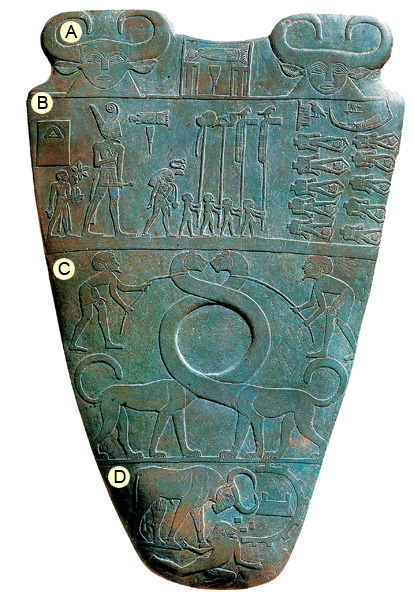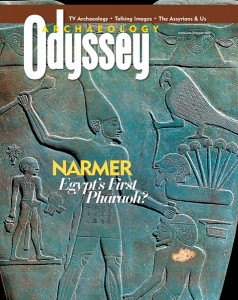Interpreting the Palette
Sidebar to: Narmer’s Enigmatic Palette

Section A
The upper rims on both sides of the palette are carved with the same design: Two human faces with curving bovine horns flank Narmer’s serekh. This serekh is a rectangular frame, often interpreted as representing a palace enclosure, around the symbols of a catfish and a chisel—a rebus for the name “Narmer.”
Section B
The king, wearing the chair-shaped red crown of Lower Egypt, marches in procession toward ten prostrate enemy soldiers, who have been decapitated (with their heads placed between their knees) and (all but one) castrated. The king is followed by an attendant who carries his sandals, perhaps suggesting that the king treads on sacred ground. The catfish-and-chisel of Narmer’s name hovers in front of the king’s face.
Section C
The sinuous necks of two “serpopards” encircle the grinding area of the palette—though this large and intricately carved palette was likely used exclusively for ceremonial purposes. Each serpopard is controlled by an attendant holding a leash attached to the beast’s neck.
Section D
A bull tramples an enemy soldier and knocks down towered fortification walls. Most scholars believe that the bull stands for the king, who is depicted in the symbolic act of subjugating an enemy town.
Already a library member? Log in here.
Institution user? Log in with your IP address.

